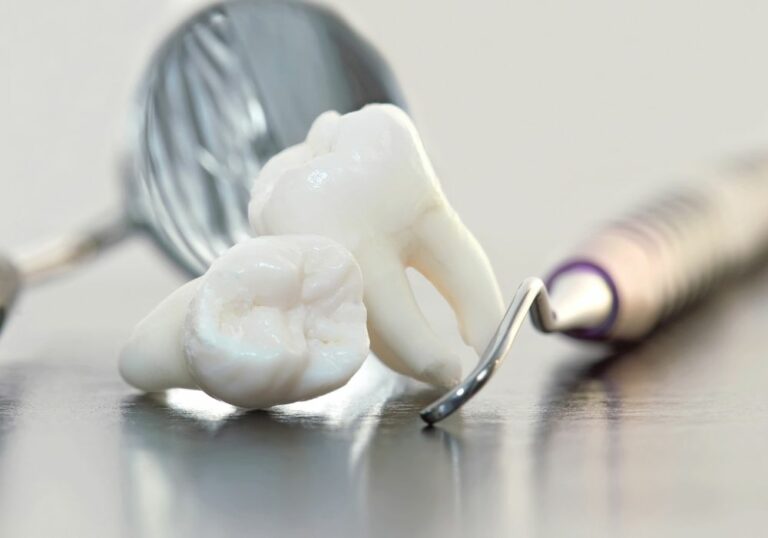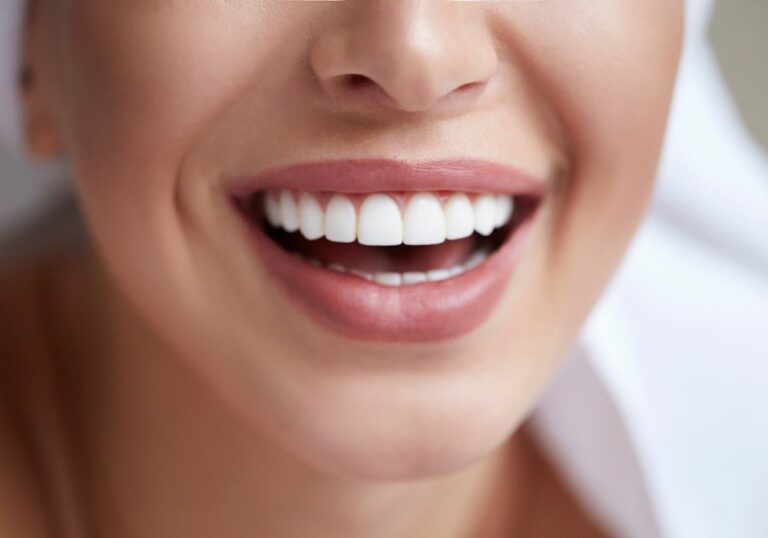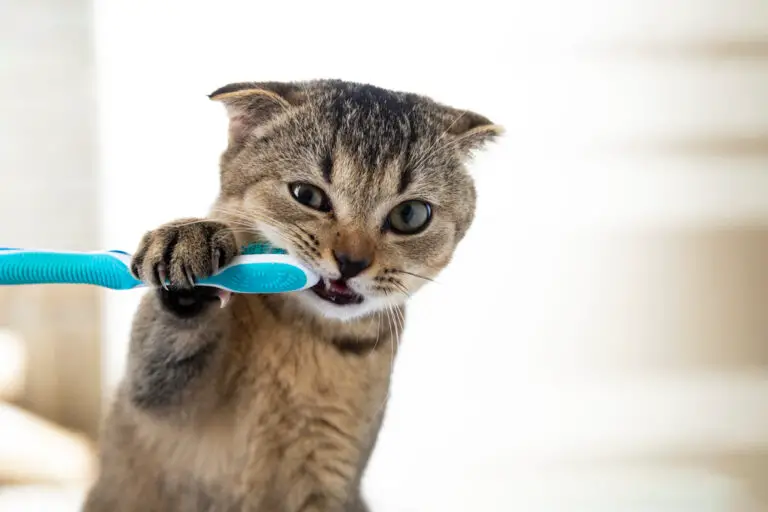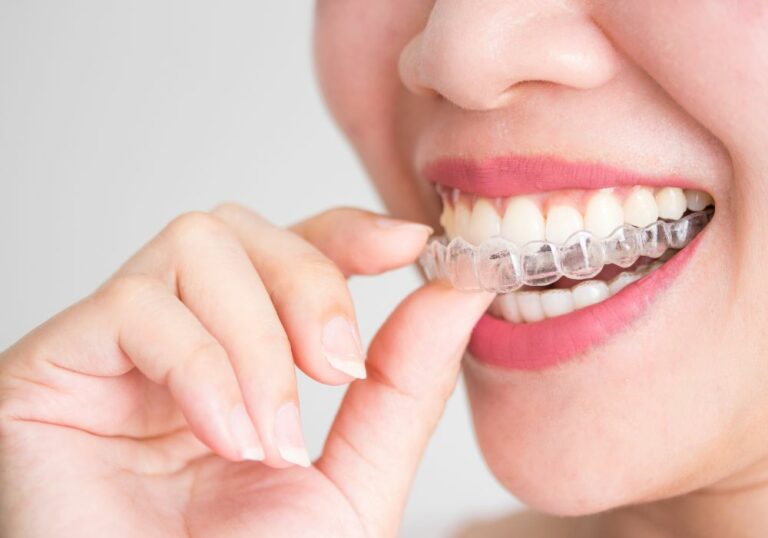Sparkling white teeth are something many people desire, leading to the immense popularity of at-home teeth whitening solutions. Teeth whitening strips have become one of the most popular options for brightening your smile. But can you get faster results by wearing whitening strips overnight while you sleep?
Teeth whitening strips are designed to be worn for limited time periods during the day. Leaving them on all night goes against manufacturer guidelines. Read on to learn the pros and cons of overnight whitening and get expert tips for safe, effective use of these popular products.
What Are Teeth Whitening Strips and How Do They Work?
Teeth whitening strips consist of thin, flexible strips of plastic coated with a gel containing carbamide peroxide or hydrogen peroxide as the active whitening agent. Well-known strip brands include Crest Whitestrips, Colgate Optic White and Rembrandt Whitening Strips.
When you apply these strips to your teeth, the whitening gel comes into contact with your tooth enamel. The peroxide breaks down stain molecules that have developed from drinking coffee, tea, wine, smoking and other causes.
As the stains split apart, they appear lighter and less noticeable. With repeated applications, teeth look visibly brighter.
Whitening strips are available in various peroxide concentrations and treatment lengths:
- Lower strength (5-10% peroxide): For quick whitenings (30-60 minutes daily for 5-10 days)
- Moderate strength (14-20% peroxide): For deeper stain removal (up to 60 minutes daily for 10-20 days)
- Higher strength (above 20% peroxide): For maximum whitening of tetracycline stains or yellowing (60+ minutes daily for 20+ days)
What Are the Benefits of Whitening Strips?
When used correctly, teeth whitening strips offer many advantages:
Convenience
- Whitening strips allow you to whiten your teeth on your own schedule and in the comfort of your own home. No need to make dental appointments.
Affordability
- OTC whitening strips can brighten your smile for a fraction of the cost of professional teeth whitening from a dentist.
Fast Results
- Consistent use as directed can lighten teeth up to 8 shades in as little as 5-10 days.
Ease of Application
- Strips easily mold and adhere to teeth. No cumbersome trays required.
Low Risk of Sensitivity
- Studies show whitening strips cause less pain and sensitivity issues compared to other peroxide-based whiteners.
Is It Safe to Wear Whitening Strips Overnight?

While teeth whitening strips offer many benefits, abusing them by wearing strips all night long comes with considerable risks.
None of the leading strip brands – including Crest, Rembrandt and Colgate – recommend using their products while sleeping overnight.
The extended exposure to peroxide gel could lead to the following problems:
Tooth Sensitivity
Tooth sensitivity is a common side effect of all peroxide-based whitening products. Peroxide seeps through enamel and damages dentin, triggering temporary nerve irritation.
Wearing strips overnight greatly exacerbates this problem. A longer duration keeps the whitening gel pressed firmly against enamel for 6-8 hours. This leaves more time for peroxide to penetrate and reach the nerves.
Gum Irritation
Teeth whitening strips are molded to adhere to the surface of teeth. However, gel from the strips can still seep onto gums if not applied carefully.
Peroxide left in contact with gum tissue for hours may cause redness, swelling, pain and other irritation.
Chemical Burns
The peroxide in whitening strips is a caustic chemical and mild acid. When left on too long, it can literally burn your gums and soft oral tissues. This may appear as white patches or ulcers on the gums.
Chemical burns require urgent dental treatment to help damaged areas heal and prevent infection. But scarring is still possible.
Enamel Erosion
Enamel is the outer protective layer of the tooth. Over-exposure to peroxide from extended strip wear may deplete minerals from enamel over time.
Thinned enamel is more prone to cavities and fractures. The damage is permanent and cannot be reversed.
For all these reasons, it’s critical to avoid overnight whitening with strips. The risks outweigh any benefits of a whiter smile.
Tips for Safely Using Teeth Whitening Strips
You can enjoy dramatic whitening results from strips without harming your oral health by following these expert tips:
Use Strips Correctly
- Carefully read and follow all instructions for length and frequency of wear time. Most strips should be used for 30-60 minutes once or twice daily.
- Don’t go rogue and wear strips overnight or for longer periods than recommended. This will not improve whitening, only side effects.
Take Needed Precautions
- Apply strips precisely so they fit onto teeth properly without touching gums. Preventing gel contact with gums reduces sensitivity and burns.
- After removing strips, thoroughly rinse your mouth with water to wash away remaining peroxide residue left on teeth and gums.
- Use desensitizing toothpaste for 1-2 weeks after finishing a course of whitening strips to help nerves calm down. Products like Sensodyne help relieve sensitivity.
Avoid Overuse
- Take periodic breaks from whitening strips during an extended 20+ day treatment, allowing enamel to “recharge” and recover from chemical exposure.
- Limit whitening sessions to just 2-3 times per year. More frequent or back-to-back whitening may progressively damage enamel.
- If you experience moderate to severe tooth sensitivity or see white spots on gums, stop using strips immediately. These are signs of overuse that require seeing a dentist.
Professional Teeth Whitening Methods
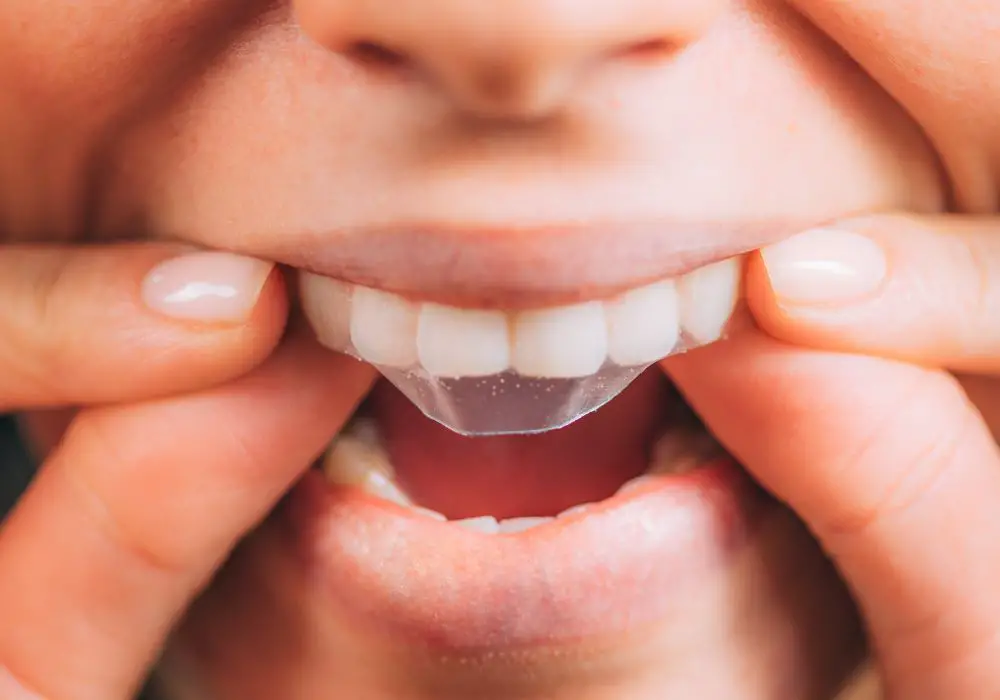
While very effective when used properly, whitening strips do have limits in their whitening power. If you want maximum stain removal with minimal sensitivity, consider professional teeth whitening supervised by your dentist.
In-Office Whitening
Also called power whitening or chairside whitening, this fast process uses higher peroxide concentrations up to 35%. The peroxide gel is activated by light or laser energy for very rapid results in about an hour.
But the higher peroxide levels also make sensitivity more likely. Gums must be protected with shields during treatment. It offers immediate dramatic whitening for severely stained teeth. Cost is about $500-1000 per treatment.
Custom Take-Home Whitening Trays
Your dentist takes impressions of your teeth to fabricate custom-fitted plastic trays. You fill each tray with a prescription strength whitening gel provided by the dentist.
The trays are worn for just 2-4 hours per day or overnight while sleeping. This gradual whitening method better allows enamel to recover between treatments. It may require 14+ days to see final results. Cost is around $400-800.
Caring for Your Whiter Smile
To maintain your brightened smile from whitening strips or professional whitening treatments:
- Brush and floss meticulously each day
- Use a soft or extra soft bristle toothbrush
- Choose non-abrasive whitening toothpaste with fluoride
- Rinse with water after consuming staining foods and drinks
- Drink through a straw to minimize contact of dark liquids with teeth
- Chew sugar-free gum to increase saliva flow after eating or drinking
- Get dental cleanings every 6 months to prevent new stains from forming
Avoid or limit intake of stain-promoting foods and beverages like:
- Coffee and tea
- Colas and dark sodas
- Red or purple juices
- Red wine
- Tobacco
- Curries and deeply pigmented sauces
Frequently Asked Questions
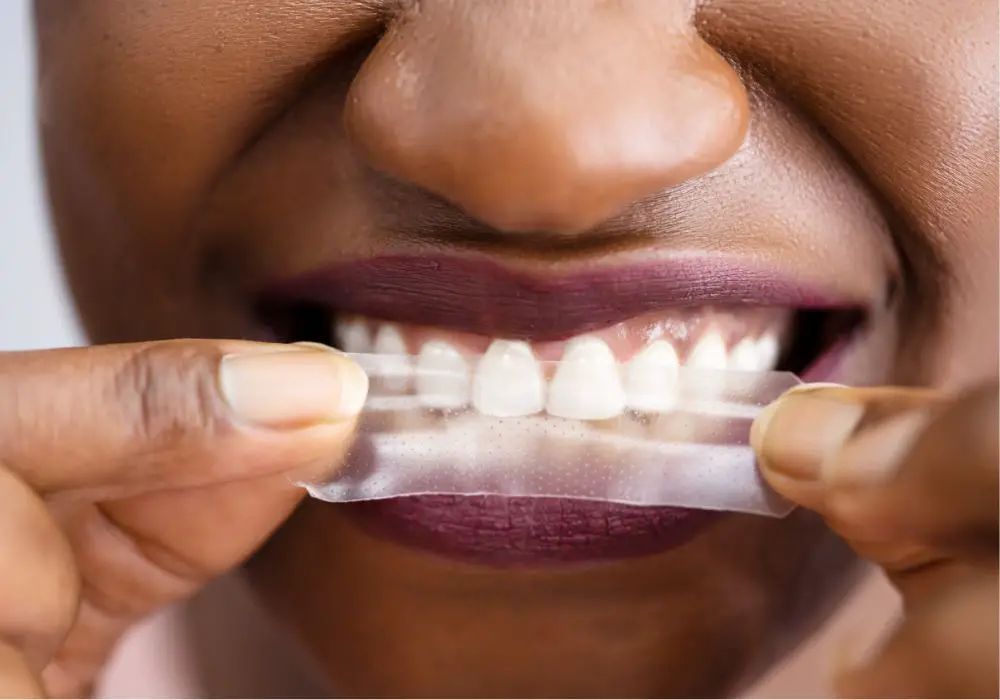
Is it safe to sleep with whitening strips in my mouth?
No. Manufacturers warn against wearing strips longer than recommended or while sleeping. Doing so drastically increases your risk of chemical burns, gum damage and tooth sensitivity.
What if I accidentally fall asleep with strips on overnight?
Remove strips immediately upon waking up. Rinse your mouth well with water. Monitor for signs of irritation or sensitivity. Discontinue use and see a dentist if you have concerns.
How often can I repeat a whitening strip treatment?
Most brands recommend limiting whitening sessions to 2-3 times per year, allowing several months between treatments. More frequent whitening may progressively damage enamel.
What’s the maximum whitening strips should be worn daily?
Don’t exceed 1-2 hours of total wear time in a day. Follow each product’s guidelines for length of each application session. Using strips too long has no added benefit and only increases side effect risks.
Is it safe to whiten teeth during pregnancy?
Discuss use of whitening strips or any beauty products during pregnancy with your OB-GYN doctor first. Only use OTC products with their approval. Avoid peroxide-based whiteners in the first trimester.
Hope this greatly expanded and more comprehensive article provides helpful information on using teeth whitening strips safely and effectively! Let me know if you need any clarification or have additional questions.

